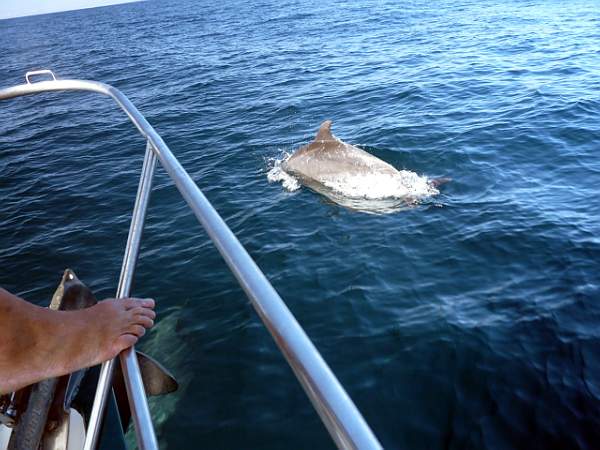Published in the Ocean Watch column, Honolulu Star-Advertiser © Susan Scott
December 14, 2009
Last month while I was sailing in Mexico, often accompanied by dolphins, a Manoa reader e-mailed me a question regarding a Star-Bulletin news report about dolphins fatally attacking a porpoise.
“I always heard the terms dolphin and porpoise were interchangeable,” Jim wrote. “Are there dolphin species along with porpoise species?”
Before I answered this question, I wanted to get home so I could read the story. I also needed to check the latest word on dolphins and porpoises because the grouping and naming of animals is controversial and classifications change.
I’m home now and here’s what I found.
In September researchers filmed what one scientist called “a mob of dolphins” ramming and drowning a harbor porpoise off Moss Landing, Calif. The headline about the incident on a TV Web site reads, “Mysterious porpoise deaths blamed on berserk dolphins.”
A BBC headline says, “Porpoises flee killer dolphins.” And on an online news site someone wrote that “people are curious about why dolphins who seem to be a mild creature would attack and kill another living creature.”
Such reporting makes it sound like these dolphins went on a bizarre killing spree. Don’t believe it. We view dolphins as cute and friendly, but they’re still wild animals living in the harsh world of natural selection. They compete for food, fend off sharks and fight for mates. Some male dolphins, like male lions, kill the young of their own species.
A bottlenose dolphin attack on a harbor porpoise, therefore, is natural and triggered by something unknown to us. Whether such killing of porpoises is on the rise isn’t known, either. It’s possible the behavior is more apparent now because we have better recording equipment, research methods and reporting.
As to the terms dolphin and porpoise, the two currently belong to different families. The largest of these, known as oceanic dolphins (although some are called whales), has about 30 species. Porpoises have their own family of six species, the harbor porpoise killed in Moss Landing being one of them.
These 6-foot-long porpoises of the North Atlantic and North Pacific coastlines prefer to swim in bays, estuaries, fjords and harbors.
The terms dolphin and porpoise, therefore, are not interchangeable. But they used to be. In a 1978 marine mammal book, prominent cetacean researchers Randall Reeves and the late Stephen Leatherwood wrote, “Our decisions to refer to the creatures as ‘porpoises’ or ‘dolphins’ are largely arbitrary and have no biological meaning.”
In a later book the biologists changed their minds about that, but halfheartedly. They state in their introduction, “The mysterious process by which animals are classified and named has taxed our imaginations and patience.”
That’s true for most of us since the system uses archaic notions in ancient languages. The word dolphin, for instance, comes from Greek meaning womb, and porpoise from Latin meaning pig fish. Imagine saying, “Is that a womb or a pig fish off the port beam?”
Those names are so silly I made up one of my own. My dictionaries define a fairy as a mythical being of folklore and romance, kindly or malicious, and usually having magical powers. On my boat those smart, tough animals that ride my bow wave will now be called sea fairies.
